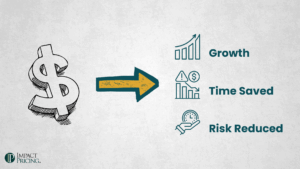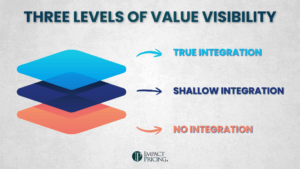You can listen to the full audio version of this blog we call — Blogcast.
I was and still am a huge proponent of Value Based Pricing. Several times I’ve argued that Value Based Pricing means charging what a buyer is willing to pay, and I justified it by saying people are willing to pay the amount they value something. Of course, this isn’t the standard definition originally coined by Tom Nagle. And every time I wrote this, I got pushback from my pricing friends. For this reason, I am defining a new pricing strategy called Context Driven Pricing.
Here is the definition of Context Driven Pricing: “Charge what a buyer is willing to pay.” It’s that simple.
There are three core tenets of Context Driven Pricing:
- Willingness to pay depends on context.
- Willingness to pay is malleable.
- Perfection is impossible.
It is impossible to price better than what a buyer is willing to pay (WTP). If you know how much a buyer is willing to pay and charge just a little more, the buyer will not buy. On the other hand, you leave money on the table if you charge just a little less. The optimal price to any buyer is always WTP.
Context Driven Pricing is also a unifying theory of pricing. Of course, I believe in and frequently use Value Based Pricing. Besides Value-Based Pricing, I also use behavioral economics when presenting prices. Pricing professionals sometimes use price elasticity, micro-segmentation, and AI algorithms to set prices. We use dynamic pricing and other price segmentation techniques. We often craft product portfolios like good, better, best to get less price-sensitive buyers to pay more. Every one of these techniques exists to capture more of a buyer’s WTP. Context Driven Pricing encapsulates all of them. The optimal approaches will depend on the industry, company, or situation.
To my fellow Value Based Pricing aficionados, this will hopefully clarify our world. Of course, value is crucial in every large purchase decision where deliberation occurs. When making large purchases, buyers surely rely on value as the largest driver of WTP. But there are other factors that we must consider if we want to capture more of a buyer’s WTP.
It isn’t just a nice name. Context Driven Pricing should focus an entire company on the single most important consideration in pricing: the buyer’s WTP. Pricing, Sales, Marketing, and Product Development should all be focused on increasing and capturing WTP.
I used to say something similar about Value. Companies should focus on creating, communicating, and capturing value. However, very few people understand what value means. It’s ambiguous at best. However, WTP is clear. It has a single meaning. We can argue how best to increase it, or measure it, or capture it, but WTP is meaningful.
Next week, I’ll blog about the first of the three tenets. But in the meantime, what do you think?
Share your comments on the LinkedIn post.
 Tags: price, pricing, pricing foundation, pricing strategy, sales, value, value-based pricing
Tags: price, pricing, pricing foundation, pricing strategy, sales, value, value-based pricing













